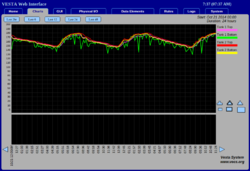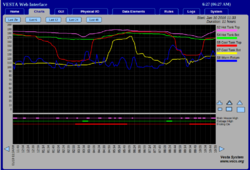*Everything* is 'somewhat system dependent' ;-)Isn't this somewhat system dependent?
You're absolutely right that stratification doesn't matter much during discharge if you have only low-temperature loads. That's a relatively small percentage of systems, though.
When charging, especially when heat loads have been satisfied, it's usually very helpful to maintain stratification so that you can supply relatively cool water to the boiler. With my non-pressurized storage, I have a hard time transferring all the boiler output to storage once the return from storage gets above 160 or so.
I have a client with 1000 gallons of pressurized storage (two 500 gallon tanks in series) charged with a Froling pellet boiler. Initially, their setup provided no almost stratification at all. As the tank charged, the Froling would have to modulate as it couldn't transfer it's full output to storage with 170 degree inlet water temperature. Some of the loads in this installation are baseboards, so their performance is reduced as they are getting water as cool as 150.

After fixing various system problems, we were able to achieve pretty good stratification. Supply temps are much more consistent, and the Froling has a much healthier delta T to work with:


